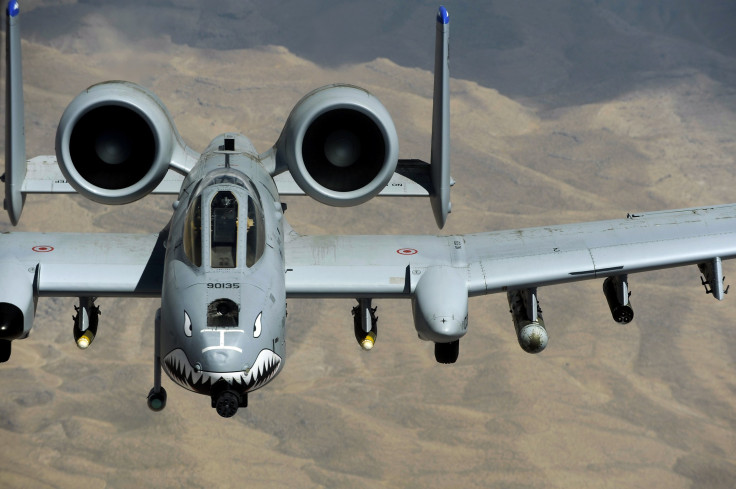Amid Anti-ISIS Airstrikes, A-10 Warthog Jets Survive US Air Force Cuts Again

The U.S. Air Force’s A-10 Thunderbolt, which is creeping toward its 44th birthday later this year, has survived budget cutbacks again as it stays in use against Islamic State group targets in Iraq and Syria. The aging aircraft — fondly known as the Warthog among the ground troops it has supported in past conflicts — was slated for retirement years ago to make way for new aircraft, but a mixture of overwhelming congressional support and operational needs are likely to see it continue until after the turn of the decade, Pentagon officials told Defense One Wednesday.
While the Air Force still wants to retire the close air support (CAS) stalwart in order to free up aircraft maintenance crews to help with the imminent arrival of the F-35 Multirole fighter, the continuing threat of ISIS has kept it in use.
“I think moving it to the right and starting it a bit later and maybe keeping the airplane around a little bit longer is something that’s being considered based on things as they are today and that we see them in the future,” the head of Air Combat Command, Gen. Herbert “Hawk” Carlisle, said in November, referring to the A-10's use in Syria, Iraq and Europe.
A U.S. congressional panel rejected the military's proposal to retire the entire A-10 fleet more than three years ago as part of the annual defense bill. The Pentagon contended that retiring the planes would save $4.2 billion through 2019.
But a campaign led by the chairman of the Senate Armed Services Committee, Sen. John McCain, R-Ariz., and Sen. Kelly Ayotte, R-N.H., managed to convince Congress to keep it year after year.
Currently the A-10 is the only CAS aircraft in service, meaning it can fly close to the ground and precisely take out enemy combatants with its high-powered Gatling gun that can fire up to 4,200 rounds per minute while avoiding civilian and friendly military casualties. The F-35 is expected to replace it and other aircraft in the coming years, despite concerns that it will not be able to perform as well as the Warthog, which took its first flight in 1972.
In November, A-10s destroyed a fleet of ISIS trucks that were transporting oil, a primary source of income for the Syria- and Iraq-based terror group. The aircraft have also been deployed to bases in Eastern Europe as a deterrent against continued Russian hostility in the region, which is a significant milestone in the life of the A-10 since they were originally designed to destroy Soviet tanks during the Cold War.
© Copyright IBTimes 2024. All rights reserved.






















